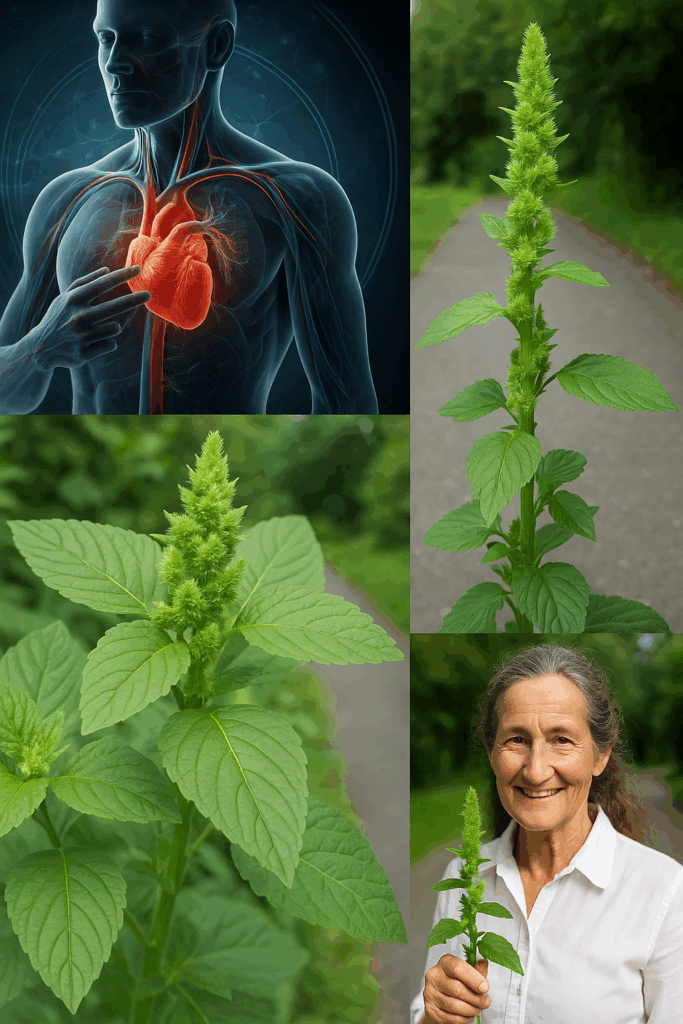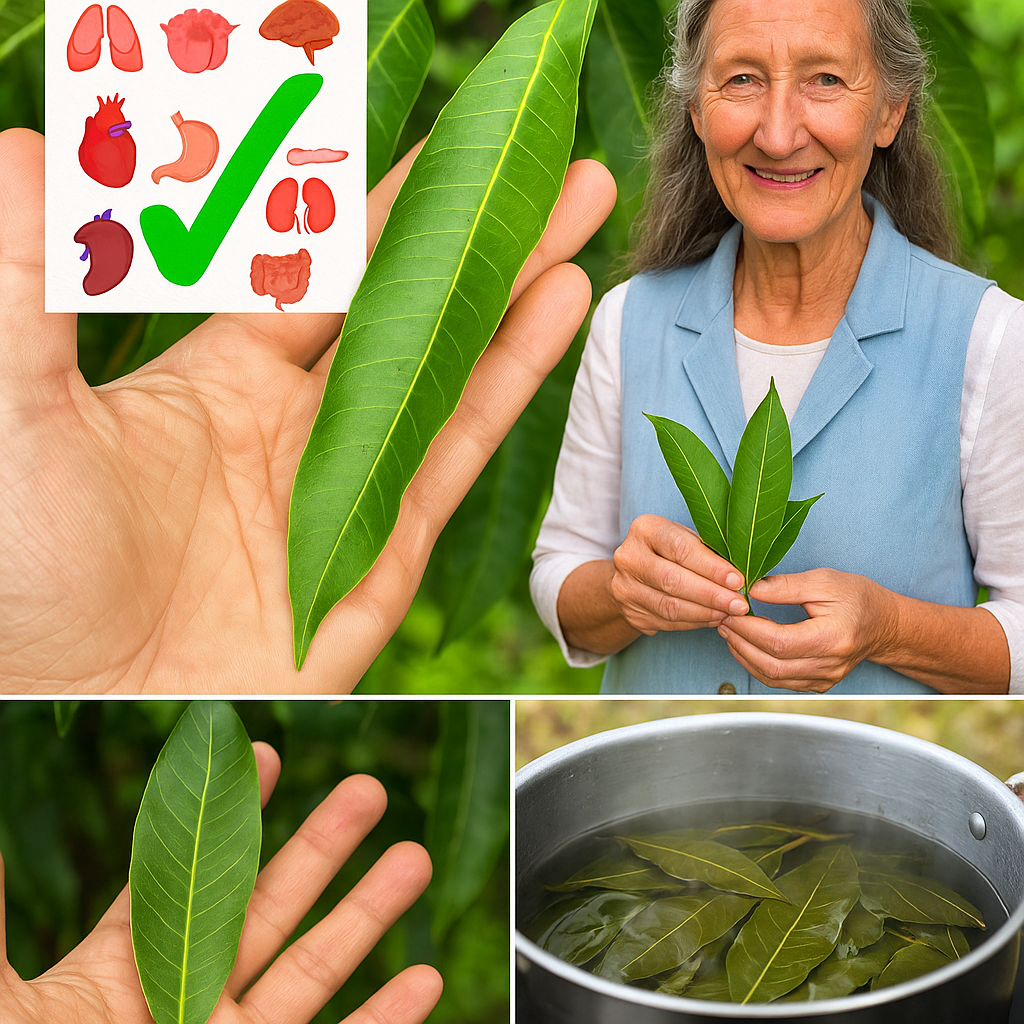Often pulled out and tossed aside as a pesky weed, Pigweed—a member of the Amaranthus genus—has quietly nourished cultures for centuries. Thriving in disturbed soils and overlooked by many modern gardeners, this wild green is far more than an intruder. Pigweed is a nutrient-dense powerhouse with impressive health benefits that span from heart support to digestive wellness.
Let’s explore why pigweed deserves a second look, how it can be safely and deliciously incorporated into your meals, and what precautions to keep in mind when harvesting this backyard superfood.

🌱 Why Pigweed Deserves a Spot in Your Diet
Pigweed isn’t just a survivor in poor soil—it’s a plant-based nutritional marvel. Both the leafy greens and the tiny seeds are packed with vitamins, minerals, antioxidants, and plant protein, making it one of the most underrated wild edibles around.
Here are 10 science-backed reasons to add pigweed to your plate:
✅ 1. Bone Strength and Density
Pigweed is high in calcium, a mineral crucial for maintaining strong bones and preventing bone-related conditions like osteoporosis. It also contains magnesium and vitamin K, both of which play supporting roles in bone formation and repair.
❤️ 2. Cardiovascular Health
The fiber, potassium, and antioxidants in pigweed work together to regulate blood pressure and reduce LDL (bad) cholesterol levels. These properties contribute to improved circulation and overall heart function.
💉 3. Iron-Rich for Anemia Prevention
Iron is vital for oxygen transport in the body. Pigweed offers a strong plant-based source of non-heme iron, helping prevent and address iron-deficiency anemia, especially important for vegetarians, vegans, and menstruating individuals.
🛡️ 4. Immune System Support
Pigweed’s vitamin C content helps bolster your immune defenses by stimulating white blood cell production and enhancing the body’s ability to resist infections and inflammation.
👁️ 5. Healthy Vision and Eye Protection
With high levels of vitamin A and beta-carotene, pigweed helps maintain retinal health and can reduce the risk of night blindness and age-related vision decline.
💪 6. Plant-Based Protein Source
Pigweed seeds, like other amaranth varieties, are rich in complete protein, meaning they contain all nine essential amino acids. This makes pigweed especially valuable in vegan and vegetarian diets.
🧠 7. Digestive Harmony
Loaded with dietary fiber, pigweed supports healthy digestion, reduces constipation, and helps stabilize blood sugar levels. Fiber also contributes to gut microbiome balance, a key factor in immunity and mental health.
🔥 8. Natural Anti-Inflammatory Agent
Pigweed contains natural anti-inflammatory compounds that may help alleviate conditions such as arthritis, joint pain, or other chronic inflammatory disorders.
🧬 9. Antioxidant Protection
Pigweed is rich in flavonoids and phenolic compounds, which help neutralize free radicals and reduce the cellular damage that contributes to aging, heart disease, and cancer.
🥗 10. A Complete Nutrient Profile
In addition to its protein and vitamins A, C, and K, pigweed delivers a wide spectrum of nutrients including iron, calcium, potassium, magnesium, and folate, supporting everything from muscle function to brain health and red blood cell production.

🍽️ How to Use Pigweed in Your Kitchen
Pigweed is surprisingly versatile and delicious when prepared properly. The leaves have a slightly earthy flavor, while the seeds are nutty and mild.
Here’s how you can enjoy pigweed at home:
🌿 Young Leaves
- Salads: Use tender, young leaves raw in salads for a nutritious base.
- Sautéed: Cook like spinach—sauté with garlic, onion, and olive oil.
- Steamed: Add to grain bowls or use as a side with lemon juice and herbs.
🍲 Hearty Dishes
- Soups and Stews: Stir into lentil soup, chicken stew, or coconut-based curries.
- Stuffing: Add pigweed to rice or quinoa stuffing for added fiber and flavor.
🌾 Seeds
- Grains: Toast and cook the seeds like quinoa.
- Flour: Grind the seeds into flour and use in gluten-free baking.
🥤 Smoothie Boost
- Add a handful of young leaves to smoothies for a burst of chlorophyll and minerals.
⚠️ Safety First: Precautions When Using Pigweed
While pigweed is safe and beneficial for most people, a few precautions are important:
- Avoid raw consumption of large amounts due to oxalic acid, which may hinder calcium absorption and contribute to kidney stone risk in susceptible individuals.
- Cook thoroughly to neutralize these compounds—steaming, boiling, or sautéing is best.
- Harvest responsibly from areas free of pesticides or industrial runoff, as wild plants can absorb environmental toxins.
- Correct identification is key. While most pigweed species are edible, always confirm with a local foraging expert or reliable guide.
🌍 Final Thoughts: From Garden Weed to Supergreen
Pigweed is more than just a stubborn plant in your garden—it’s a highly nutritious, sustainable, and delicious green that deserves to be celebrated. With a powerful nutritional profile, rich traditional history, and simple preparation methods, pigweed stands out as one of nature’s forgotten treasures.
Whether you’re looking to boost immunity, strengthen bones, or clean up your diet with wild greens, pigweed is an easy, accessible choice. So next time you find it in your yard, don’t pull it out and toss it—harvest it, cook it, and let your body benefit from one of the garden’s greatest hidden gems.


